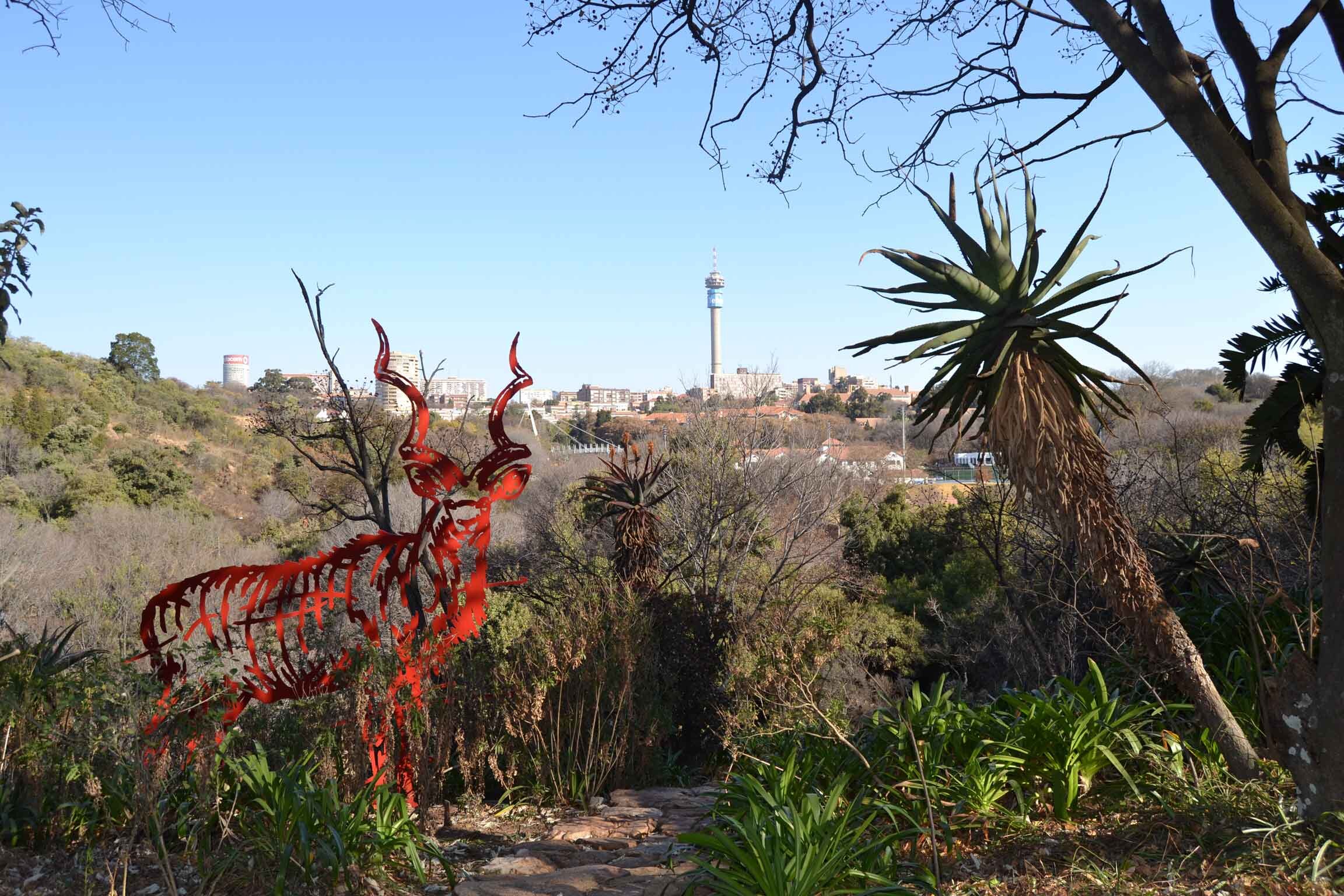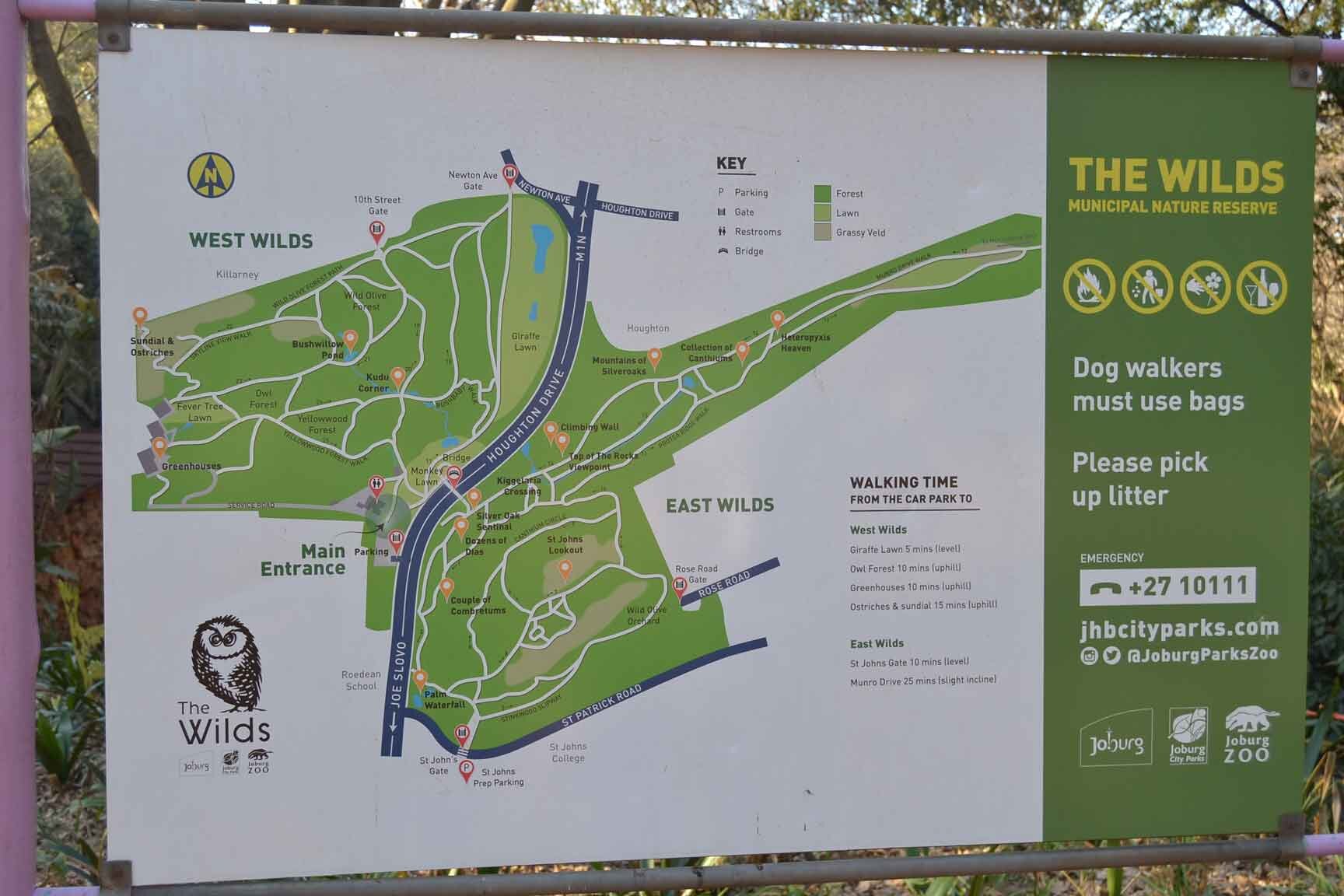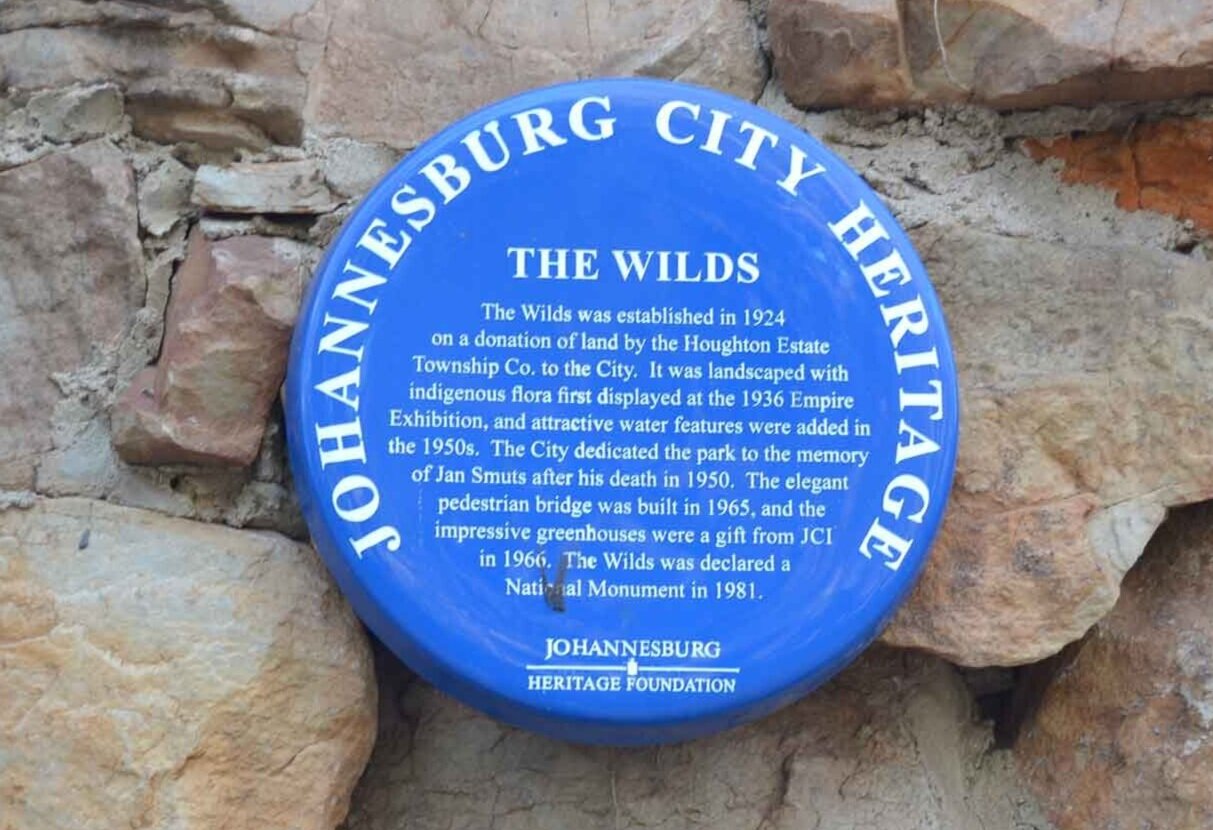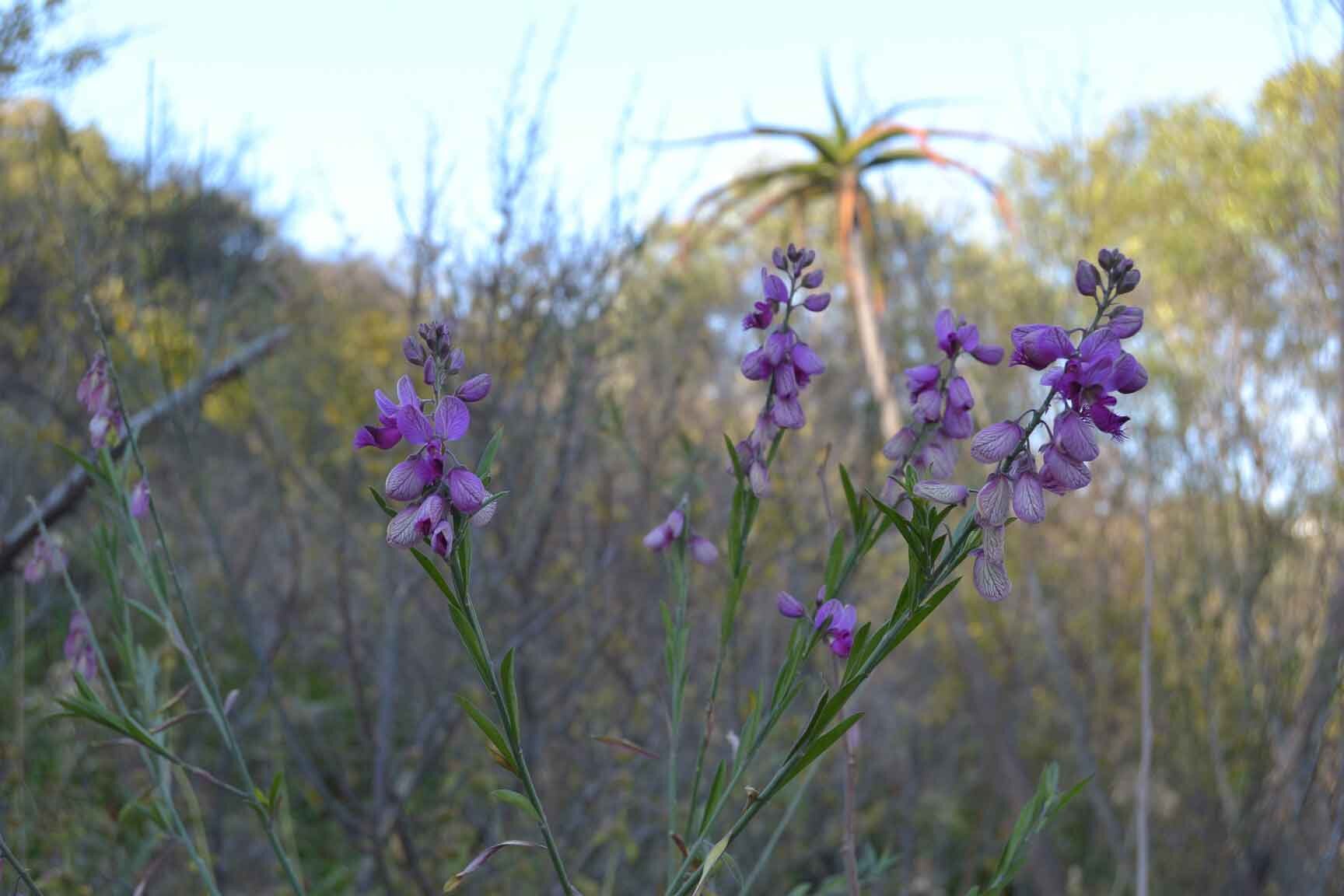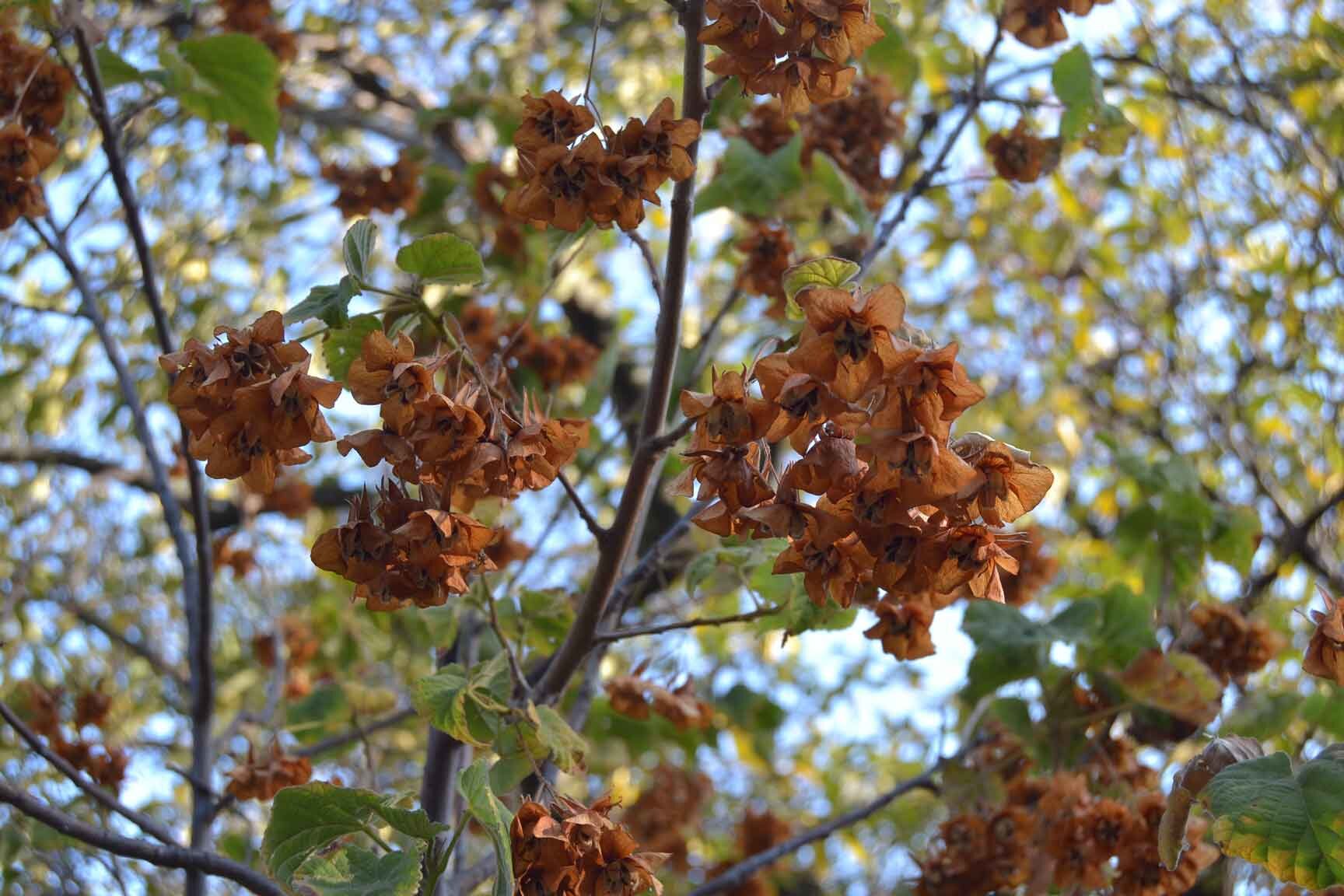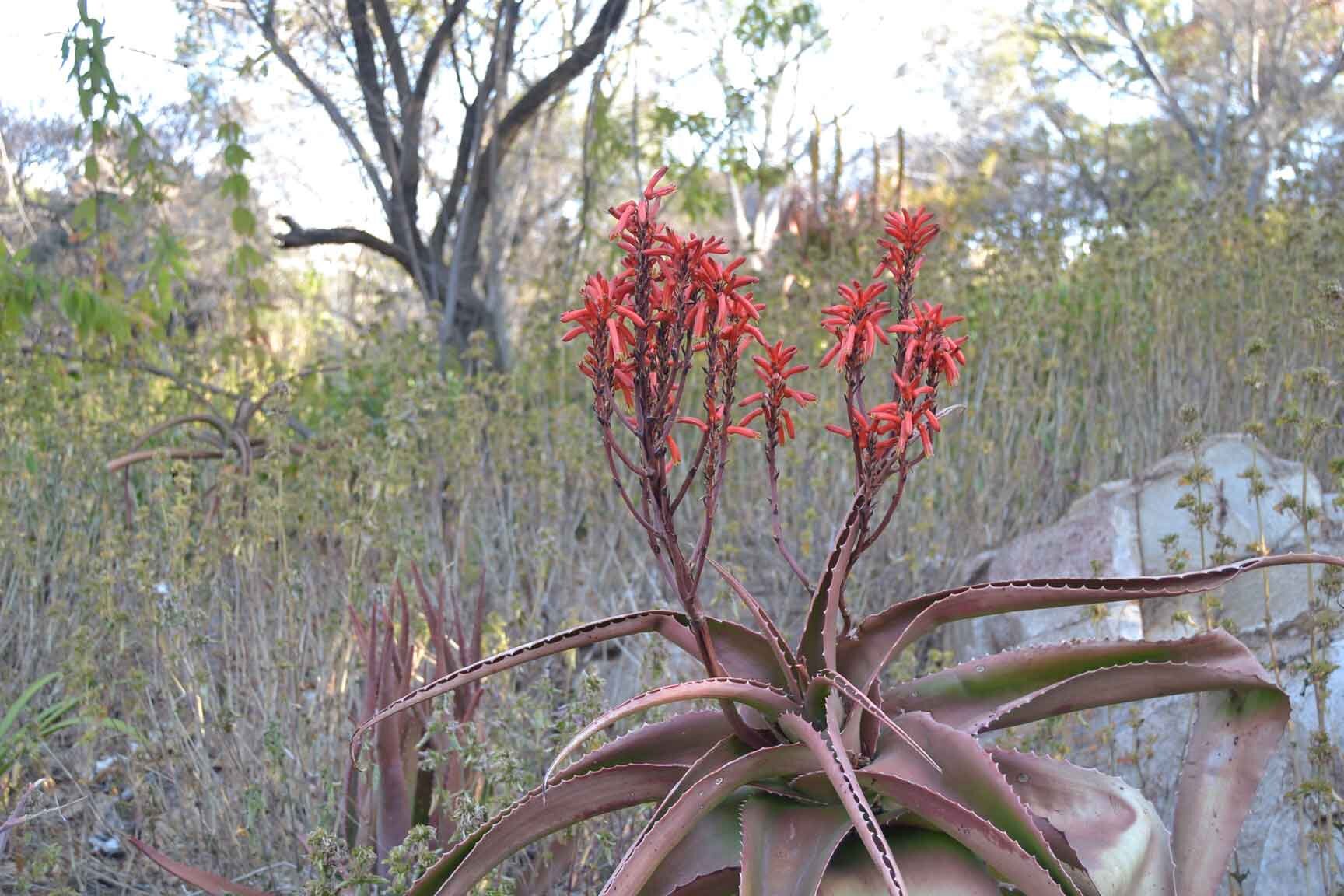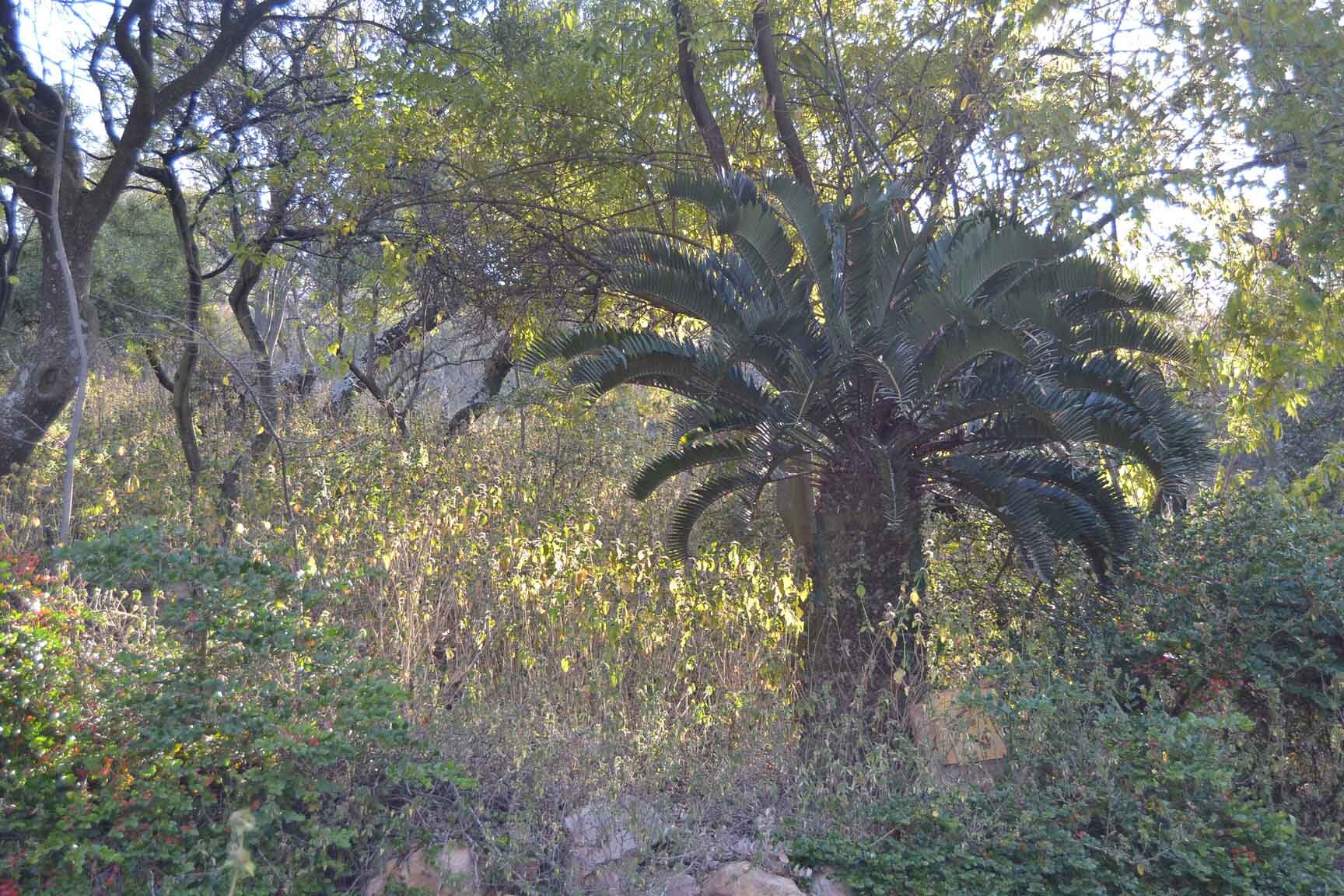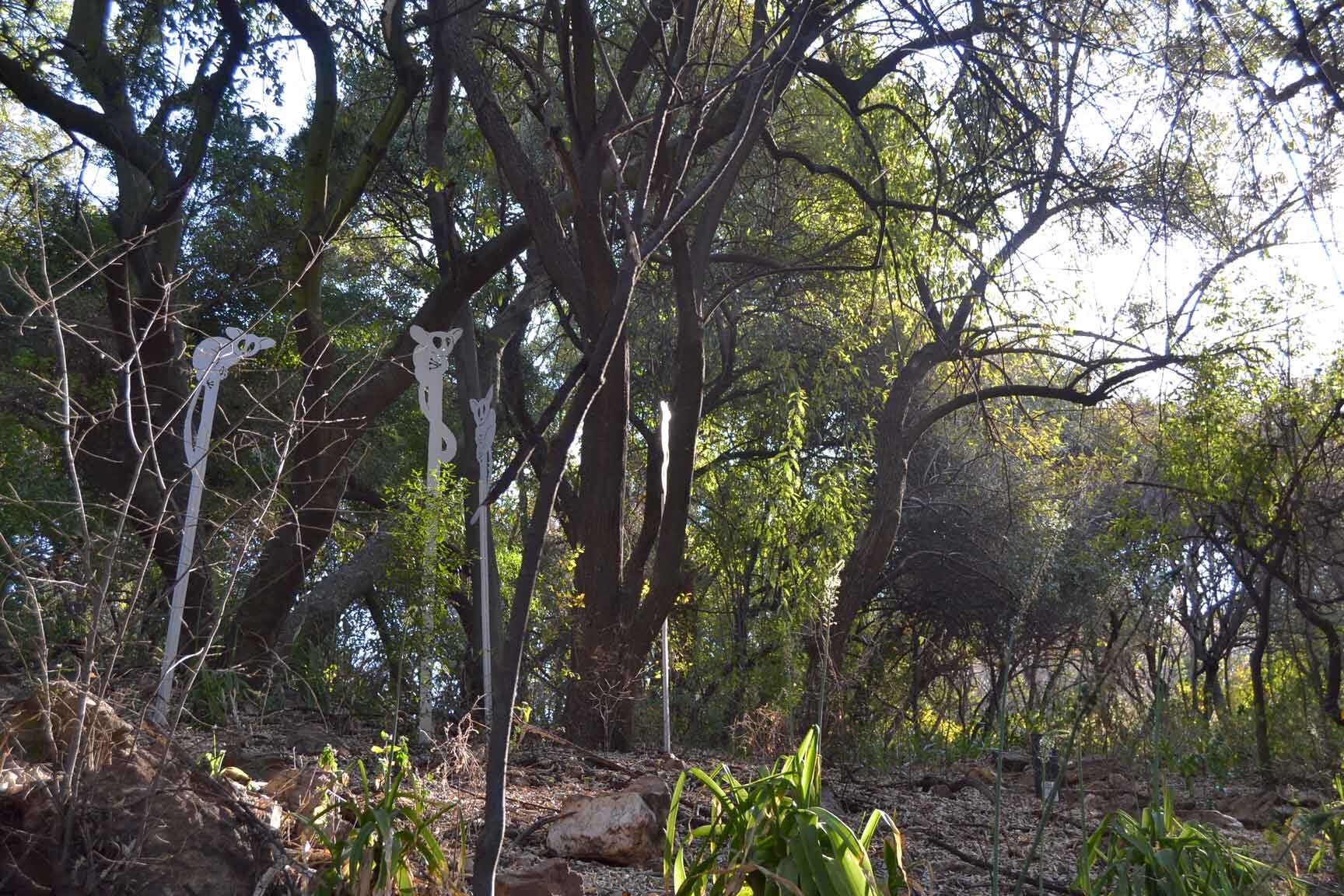Kudu Sculpture with View of Telkom Tower from The Wilds
I had heard rumours about a beautiful outdoor space in Johannesburg called The Wilds but it was shrouded in mystery and even the name made me imagine an overgrown and slightly dangerous place to visit, naturally making me a bit apprehensive to go there. When I eventually did visit I was completely taken aback by the beauty and history of this Park. I was captivated by the winding stone paths, the incredible views, the amazing selection of indigenous plants and the artworks that brought such an element of fun and wonder.
Location
The Wilds is located on Houghton Drive, Houghton and is situated on the Parktown Ridge. It consists of two parts, East and West, and is connected by a bridge over Houghton Drive. The West is more park-like and popular amoung visitors, especially the Giraffe Lawn area while the East is recommended to walk in Groups.
Map of the Park at Main Entrance
History
The Park, like Zoo Lake and the Johannesburg Zoo, was a corporate gift to the citizens of Johannesburg. In 1924 the Johannesburg Consolidated Investment Company (JCI) donated the land, on condition that it remained in its natural state and open to the public. Once it was completed in 1938 it was opened to the public. In 1968 the JCI again donated to the park in the form of four greenhouses. It was declared a national monument in 1981.
In the 1980s and 1990s it was hit by crime and people stopped visiting. The park became forgotten and overgrown. In the early 2000s the park was fenced off and a resident named TJ de Klerk tried to revive it by taking people on guided walks on both sides of the park. See more about the rejuvenation of the Park further below, but let’s first look at its physical features:
Vegetation
The trees are incredible – massive Yellowwoods, Lavender Trees, Fever Trees, White Stinkwoods, Cabbage Trees, Olive Trees and a stunning assortment of Cycads and Aloes. The beds below the trees are filled with indigenous groundcovers and I saw plants on display that are seldom seen elsewhere (E.g Pycnostachys urticifolia). This collection of plants has developed over the years as supporters have donated plants and a large donation was made after the Empire Exhibition in 1936 when the Golden Jubilee (50th anniversary) of Johannesburg was celebrated.
Pathways
The winding pathways and staircases (over 8km) are made out of natural packed stone and these create a delightful maze to explore and discover. There is good signage that ensures you don’t get lost and also a map at the entrance to orientate yourself when first arriving. We naturally made our way up through the park, following the paths to the highest point of the park where the sundial is located and the views are panoramic.
Can you spot the Owls? There are 67
Beautiful Stone Pathways
Benches for resting and clear Signage
Sundial
The sundial was created and installed by sundial maker Malcolm Barnfield and stonemason Dave Baguley in 2005 and is inscribed with the words “I only count the sunny hours”. The message around the base of the dial reads “Blessed too is he who learned to know the God of The Wilds” which was previously depicted on a plaque commemorating the words spoken by Jan Smuts. When Smuts died in 1950 The Wilds was dedicated to his memory. (Davie, L. A journey through Johannesburg’s Parks, Cemeteries and Zoo. 2014. JHB City Parks and Zoo)
Sculpture
One of the highlights of The Park must certainly be the striking steel sculptures (mostly animals) made by artist James Delaney who has also been instrumental in transforming and rejuvenating the park (See Rejuvenation below). The first installation took place in 2017 as a means of drawing people’s attention to the park. As it was close to Mandela Day, he chose to design 67 owl sculptures that would hang high in the forest and these are a delight to find for young and old alike. Delaney explains that the sculptures start as charcoal sketches which are then laser cut from steel and painted or powder coated. The pink and yellow giraffe, located on the large bottom lawn area is life size and visible from the main road running past the park. According to Delaney this was a deliberate intervention to draw people’s attention to this once neglected space. The sculpture installations in the park won an award from BASA (Business Arts South Africa) in 2018. (https://www.delaney.co.za/outdoor-sculpture/)
Giraffe Lawn in the late afternoon with visitors picnicking
Bush Baby Forest
Views
The park offers views of Hillbrow, Berea and the inner city. This includes views of several Johannesburg landmarks, including Ponte City Apartments, The Hillbrow Tower, St. Johns School for Boys, Roedean School for Girls, and many mansions in the suburb of Houghton. (https://en.wikipedia.org/wiki/The_Wilds_Municipal_Nature_Reserve)
Rejuvenation
It has only been in the last few years that the Park has been fully revived and people feel safe enough to return. This has largely been brought about by artist James Delaney who has spent a considerable amount of time and money on generating funding and gaining support for the Park. He received an AfriSam-SAIA Award for his work in raising over R100 000 but this is just one of the many interventions he has championed. It is inspiring to read his story and how he became involved.
Here is an excerpt taken directly from his website where he details the history of his involvement and the progress made: (taken from https://www.delaney.co.za/installations/my-story-of-the-wilds/)
“Here are some highlights of the work that’s been achieved with my team, with volunteers and with the City Parks Wilds staff on the ground;
Restoration of 80 park benches, repainting them in bold colours on volunteer days, with donated paint and tools.
A mini library was donated for the entrance, from which people borrow or take books. It’s become really well used, especially by kids from the inner city.
Negotiation with Roedean School to take down their stone wall, which had become unstable, and replaced with a fence, and the stone donated to The Wilds.
Construction of the circular entrance area with seating, designed by Martine de la Harpe and built by JJ with the Roedean stone. This used to an eroded slope of dirt, a depressing welcome to the park. This was sponsored by Hollard, whose Villa Arcadia head office shares the same ridge as The Wilds, and they have done considerable indigenous planting to restore their landscape.
Sealing the ponds and the installation of a pump which draws water discarded by Gautrain (they pump millions of litres out of their tunnels into the underground river). This water now flows beautifully though the lower ponds, and back into the river. This system was developed and installed by YPO, and opened by the Mayor. (YPO also got the upper ponds and waterfalls working for a while, but we’re waiting for City Parks to install a new pump for that system.)
Mulching of flowerbeds. City Parks always used to take leaves to the dump, but I eventually convinced them to layer them on flowerbeds to protect the soil. They still won’t allow us to make compost.
Design and installation of 100 items of signage throughout the park, thanks again to Hollard – directional, rules, information and welcome signage. Because City Parks has dated and unfriendly signage design, I redesigned a whole signage template for them. Most of the new signs are mounted onto a recycled plastic product.
Huge weeding, every summer, which has broken the seed cycle of blackjacks and khakibos in most of the West Wilds (we have a long way to go in the East Wilds).
Restoration of the hillside where the sundial is, including replanting indigenous grasses and aloes and removing all the nasty rusted wire fencing.
Resurfacing of the carpark and internal road, and painting the pedestrian bridge (done by JRA, but I lobbied for it).
Repairs to broken and missing pieces of fence, especially on the East Wilds (which is an ongoing job).
Installation of fencing along Munro Drive, to complete the fencing of the entire perimeter of the park.
A friend of The Wilds replaced the decrepit security hut, with a new structure which was warmer and nicer for the guards.
Regular “Walk n Talk” sessions where visitors are led around the park in conversation with interesting people.
Several weekly exercise classes on the lawns, run by various people who love outdoor training.
Corporate events, weddings, small events and school tours have become a regular occurrence, providing an income stream to the city (unfortunately this doesn’t directly benefit The Wilds). They must be booked via City Parks, but when organisers approach me, I always ask them to add an element of giving back to the park, usually through volunteer work.
Moving large aloes from locations where they are in too much shade (they start rotting) into the sun.
Collecting cuttings for the nursery, which now has several thousand plants, particularly succulents. This has been an ongoing job benefiting from dozens of volunteer hands.
Restoration of the abandoned compost area with the Rosebank Scouts.
Large new flowerbeds around Giraffe Lawn, and repairing the little bridge, now adorned with crocheted flowers by local artist Curious Sleuth.
Other artists are making their mark too; there was a land art project, and Gordon Froud’s sculpture installation, made from orange beacons, stands on the East Wilds.
Planting indigenous trees. Volunteers have started labeling them too. We now also plant along the streets surrounding the park, to extend the forest canopy.
Clean-up of the climbing wall, which is now regularly used.
Clearing of invasive alien trees on the edges of both the East and West Wilds.
Lining several kilometres of pathways with stones, to prevent damage to the plants on the edges.
Restoration of 4 drinking fountains, broken for decades. Local mosaic artists are making beautiful detailing.
The Munro Centenary Gates, which I drew using aloes as a motif which now stand on the Munro Drive side. Look carefully for the owls and mouse…
As the sculptures became popular, I used them to open up sections of the park that people weren’t visiting – they became destinations within the park, allowing people to walk further and spend more time exploring. There are now 100 sculptures – monkeys, a pangolin, ostriches, the red kudu family, klipspringers, duiker and more.
The largest is a 5 metre high pink and yellow giraffe, on what is now known as Giraffe Lawn. This was an important landmark piece as it is visible from the road, drawing the attention of passers-by. I crowdfunded to pay for the materials, which were considerable – it’s so heavy it had to be installed using a crane, and we had to bring a concrete mixer down narrow stone paths to lay the large block of concrete below ground to support it.” Read more on his website
How can you make a difference
Every person can make a difference in this life. We are all uniquely situated with unique talents and abilities. If we look back over the history of this park we see demonstrations of generosity where people have given land, time, money, plants, energy and love. The Wilds is a Park layered with history, memory and natural beauty. Fortunately for the citizens of Johannesburg James Delaney got a dog and needed a place to walk him and through his efforts over these recent years we can again experience this remarkable space. Where can you make a contribution to a park, an organisation or initiative to make a difference in your community?


